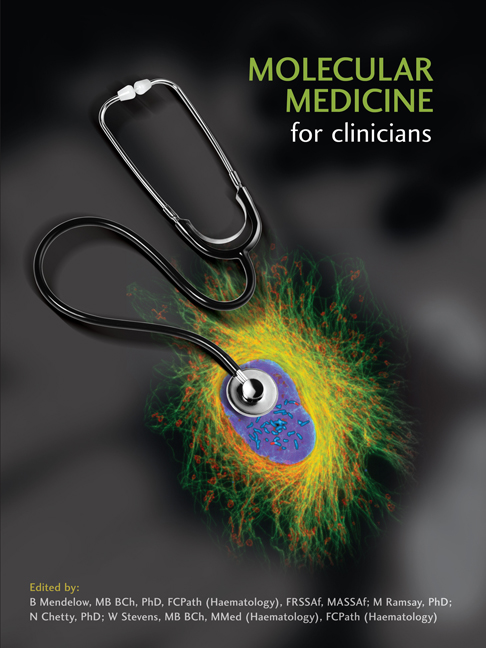Book contents
- Frontmatter
- Contents
- Foreword
- Acknowledgements
- Chapter 1 Introduction
- Keynote Essay 1: Defining Who We Are: DNA in Forensics, Genealogy and Human Origins
- Section 1 Principles Of Cellular And Molecular Biology
- Chapter 2 Digital Concepts in Molecular Medicine
- Chapter 3 The Anatomy and Physiology of the Genome
- Chapter 4 Molecular Cell Biology
- Chapter 5 Genetic Variation
- Chapter 6 Genes in Development
- Chapter 7 Tools of Molecular Medicine
- Keynote Essay 2: The Human Genome
- SECTION 2 MOLECULAR PATHOLOGY
- SECTION 3 MOLECULAR THERAPEUTICS
- SECTION 4 RESEARCH AND THE CONTINUING EVOLUTION OF MOLECULAR MEDICINE
- Glossary
- Contributors’ Biographies
- Source Material And Recommended Reading
- Permissions And Credits
- Index
Chapter 3 - The Anatomy and Physiology of the Genome
from Section 1 - Principles Of Cellular And Molecular Biology
Published online by Cambridge University Press: 04 June 2019
- Frontmatter
- Contents
- Foreword
- Acknowledgements
- Chapter 1 Introduction
- Keynote Essay 1: Defining Who We Are: DNA in Forensics, Genealogy and Human Origins
- Section 1 Principles Of Cellular And Molecular Biology
- Chapter 2 Digital Concepts in Molecular Medicine
- Chapter 3 The Anatomy and Physiology of the Genome
- Chapter 4 Molecular Cell Biology
- Chapter 5 Genetic Variation
- Chapter 6 Genes in Development
- Chapter 7 Tools of Molecular Medicine
- Keynote Essay 2: The Human Genome
- SECTION 2 MOLECULAR PATHOLOGY
- SECTION 3 MOLECULAR THERAPEUTICS
- SECTION 4 RESEARCH AND THE CONTINUING EVOLUTION OF MOLECULAR MEDICINE
- Glossary
- Contributors’ Biographies
- Source Material And Recommended Reading
- Permissions And Credits
- Index
Summary
INTRODUCTION
The genome represents the entire genetic complement of an organism and is a repository of biological information, which is used to create and sustain every living system. Typically, a genome is composed of nucleic acids, with deoxyribonucleic acid or DNA being the most common form, although some viral genomes are composed of ribonucleic acid or RNA. DNA is a polymeric chain defined by a sequence of monomeric units called nucleotides. The asymmetrical arrangement of the nucleotide sequence of DNA or RNA represents a ‘code’ that defines the functional and structural role of a genome within an organism. It is therefore not surprising that the genome is frequently referred to as the ‘blueprint of life’.
Although all living organisms contain genomes, the focus of this chapter will be on the human genome, which is composed of two distinct sections: nuclear and mitochondrial. The nuclear genome is by far the largest section and comprises about 3.2 billion nucleotides, which are divided into 24 linear molecules of DNA arranged into structures called chromosomes. The mitochondrial genome is a much smaller circular molecule of DNA comprising 16 569 nucleotides. Many mitochondrial organelles are found within a cell, allowing for multiple (approximately 8000) copies of this genome to be present.
Mere numbers can often deceive one, since everything operates at the molecular level. This molecular scale needs to be appreciated better. For example, there are over 100 000 000 000 000 cells in a typical adult human, and most cells have two complete copies (diploid) of the nuclear genome. If one were to convert the sequence of nucleotides into alphabetical letters this would equate to approximately 3000 volumes of Gray's Anatomy per cell! The past two decades have seen the completion of the sequencing of the human genome, a monu - mental scientific feat. However, we are now faced with the challenge of deciphering this code, a task that brings biology and medicine into the realm of the information sciences. This phenomenon is not dissimilar to the evolution of the computer that led to the development of information technology and the modern digital revolution.
- Type
- Chapter
- Information
- Molecular Medicine for Clinicians , pp. 19 - 36Publisher: Wits University PressPrint publication year: 2008



